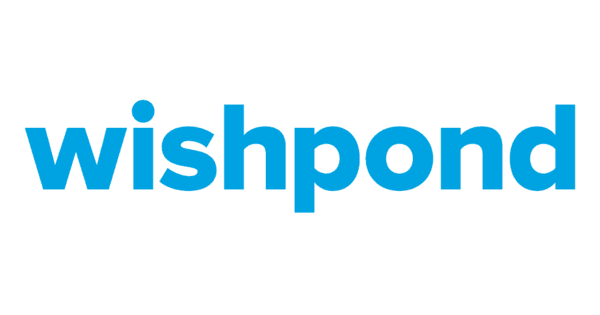In the bustling world of digital marketing, where first impressions are everything, your landing page stands as the front door to your online business. It greets visitors, tells your story, and, most importantly, convinces them to take action. With stakes this high, choosing the right landing page tool isn’t just a decision; it’s a declaration of your brand’s commitment to excellence. Today, we’re putting two heavyweight contenders head-to-head: Unbounce, known for its robust, feature-rich platform, and Wishpond, celebrated for its simplicity and versatility. But which one is the champion for your marketing needs? Let’s dive into the details to find out.
| Unbounce | Wishpond |
|---|---|
 |  |
| G2 Score – 4.4 out of 5 stars | G2 Score – 3.7 out of 5 stars |
| TrustRadius Score – 7.1/10 | TrustRadius Score – 1.8/10 |
Usability and Design Flexibility
The Foundation of Your Online Identity
Creating a landing page that captures attention and converts requires more than just good content; it demands a platform that blends usability with design flexibility. Here’s how Unbounce and Wishpond measure up in empowering you to craft that perfect landing page.
Unbounce: Where Creativity Meets Conversion
Unbounce is a powerhouse in the landing page arena, offering a drag-and-drop builder that marries ease of use with unparalleled customization. With a rich library of templates at your fingertips, Unbounce sets the stage for your creativity, allowing you to tweak, test, and transform pages to your heart’s content. Whether you’re an experienced designer or a marketer looking to bring your vision to life, Unbounce’s platform is designed to let your creativity flourish without ever feeling constrained by coding limitations.
Dynamic Text Replacement adds another layer of personalization, ensuring your content speaks directly to your audience, boosting relevance and conversion potential. Coupled with advanced A/B testing capabilities, Unbounce doesn’t just let you create beautiful pages; it empowers you to create smart, data-driven landing pages optimized for performance.
Wishpond: Streamlining Your Path to Conversion
Wishpond takes a slightly different approach, focusing on simplicity and efficiency without sacrificing power. Its user-friendly interface makes landing page creation accessible to marketers of all skill levels, offering a selection of templates that are both attractive and optimized for conversion. Wishpond’s strength lies in its integration capabilities, seamlessly connecting your landing pages with a suite of marketing tools from email campaigns to social contests, enriching the visitor’s journey from the landing page to conversion.
While Wishpond may not offer the same depth of customization as Unbounce, it provides a balanced mix of design options that can cater to most needs without overwhelming users. For businesses looking for a straightforward, no-fuss platform that delivers results, Wishpond presents a compelling case.
Conversion Optimization Features
Turning Visitors into Leads
The true power of a landing page tool isn’t just in its ability to create visually appealing pages but also in its features designed to convert visitors into leads or customers. Both Unbounce and Wishpond offer a suite of optimization tools, but they approach conversion optimization in distinct manners tailored to different marketing needs.
Unbounce: Precision-Driven Optimization
Unbounce is renowned for its focus on optimization and conversion. The platform offers advanced A/B testing capabilities, allowing marketers to test variations of their landing pages to identify the most effective elements. This feature is critical for understanding what resonates with your audience and refining your pages for maximum impact.
Dynamic Text Replacement (DTR) is another cornerstone of Unbounce’s optimization toolkit. DTR enhances the relevance of landing pages by tailoring content to match the visitor’s search queries or user attributes, thereby increasing the likelihood of conversion through personalization.
Moreover, Unbounce provides detailed analytics and insights, enabling users to dive deep into the performance of their landing pages. By leveraging this data, marketers can make informed decisions to further optimize their pages, ensuring that every element, from headlines to call-to-action buttons, is fine-tuned for conversion.
Wishpond: Streamlined Optimization within a Marketing Ecosystem
Wishpond, while offering a more streamlined approach to landing page creation, also provides users with effective tools for conversion optimization. Its A/B testing feature, though perhaps not as robust as Unbounce’s, still enables marketers to compare different versions of a page to see which performs better in converting visitors.
Where Wishpond particularly shines is in its seamless integration with other marketing tools within its platform, including email marketing and lead nurturing workflows. This integration allows for a holistic approach to conversion optimization, where landing pages are just one part of a broader strategy designed to guide visitors through the conversion funnel.
Additionally, Wishpond offers real-time analytics and reporting, giving marketers a snapshot of their landing page performance and the ability to quickly adjust strategies to improve conversion rates.
Integration Capabilities
Connecting Your Marketing Tools
The effectiveness of your landing pages often depends on how well they can be integrated with other tools in your marketing stack, such as CRM systems, email marketing platforms, analytics tools, and more. Both Unbounce and Wishpond offer integration capabilities, but they approach them differently to cater to their users’ needs.
Unbounce: Expansive Integration for Tailored Marketing Workflows
Unbounce stands out for its robust approach to integrations, designed to cater to marketers who rely on a diverse array of tools to capture leads, analyze data, and personalize customer interactions. The platform’s extensive array of direct integrations encompasses a wide variety of categories, ensuring that whether you need to connect to email marketing platforms, CRM systems, analytics tools, or webinar services, there’s likely an integration available to meet your needs. This breadth of connectivity supports sophisticated marketing workflows, enabling users to automate processes, enhance data accuracy, and ultimately drive higher conversions from their landing pages.
Moreover, Unbounce’s compatibility with Zapier exponentially increases its integration capabilities, offering access to thousands of additional apps and services. This means that even if a direct integration isn’t natively supported, users can still connect their Unbounce landing pages with virtually any other tool they use, facilitating custom workflows that align perfectly with their unique marketing strategies. Whether it’s syncing leads in real-time to a CRM, triggering personalized email campaigns based on landing page interactions, or dynamically updating ad campaigns based on conversion data, Unbounce’s integration capabilities empower marketers to create highly efficient, data-driven campaigns.
Wishpond: Seamless Integration Within an All-in-One Platform
On the other side, Wishpond’s integration strategy emphasizes its strength as an all-in-one marketing solution. While it also offers a range of integrations with external tools, the seamless connection between its landing page builder and other components of the Wishpond platform stands as a testament to its integrated approach. By ensuring that landing pages can easily share data with email marketing, lead management, and marketing automation tools, Wishpond enables marketers to streamline their campaign management processes. This cohesive ecosystem supports a unified approach to marketing, where data flows freely between tools, enhancing the relevance and effectiveness of each interaction with potential customers.
Wishpond’s integrated approach simplifies the marketing process for users, reducing the need to manage multiple separate integrations and ensuring that all components of a campaign are working together harmoniously. For businesses that value simplicity and seek to minimize the complexity of their marketing tech stack, Wishpond presents a compelling option. The platform’s native integrations within its suite of tools ensure that landing pages are not just standalone assets but integral parts of a comprehensive marketing strategy, driving engagement and conversion through a unified campaign approach.

Related: Check out our free SEO suite

Analytics and Reporting
Deciphering the Success of Your Campaigns
In the realm of digital marketing, data is king. The insights derived from analytics and reporting functionalities can illuminate the path to enhanced campaign performance, enabling marketers to make informed decisions that drive conversions and ROI.
Unbounce: Data-Driven Decisions at Your Fingertips
Unbounce provides users with robust analytics and reporting features that allow for a deep dive into the performance of landing pages. The platform offers real-time data visualization, enabling marketers to track key performance indicators (KPIs) such as conversion rates, visitor behavior, and campaign effectiveness with ease. This immediate access to data ensures that marketers can quickly identify trends, adjust strategies, and implement optimizations to improve results.
Beyond basic analytics, Unbounce’s A/B testing results are seamlessly integrated into its reporting, offering clear, actionable insights into which variants perform best and why. This level of detail extends to understanding how different segments of your audience interact with your landing pages, allowing for further refinement of targeting and personalization strategies. For marketers who thrive on data and seek to continuously improve their campaigns through iterative testing, Unbounce’s analytics and reporting capabilities provide a powerful toolkit.
Wishpond: Holistic Insights Within an Integrated Platform
Wishpond, while offering a suite of marketing tools beyond landing pages, ensures that its analytics and reporting features are comprehensive and user-friendly. The platform provides an overview of landing page performance within the context of broader marketing campaigns, enabling users to measure the effectiveness of their landing pages alongside email marketing, social media contests, and automation workflows.
The integrated nature of Wishpond’s analytics allows for a holistic view of campaign performance, making it easier for marketers to see how different elements of their strategy work together. Reporting on conversions, leads captured, and engagement metrics is streamlined and accessible, supporting marketers in making data-informed decisions. For businesses looking for an all-in-one marketing solution, Wishpond’s analytics offer the convenience of centralized reporting, simplifying the process of tracking and analyzing campaign performance across multiple channels.
Pricing and Plans
Balancing Cost with Functionality
The pricing structure of a landing page platform can significantly impact a business’s decision, especially when budget considerations are as crucial as feature requirements. Here’s a closer look at how Unbounce and Wishpond stack up in terms of their pricing models and what users can expect at different tiers.
| Unbounce | Unbounce offers several pricing plans for its landing page services. The “Build” plan starts at $74 per month when billed annually, or $99 on a monthly basis. The “Experiment” plan is $112 per month with annual billing, or $149 monthly. The “Optimize” plan costs $187 monthly with an annual commitment, or $249 if paid monthly. For custom needs, the “Concierge” plan is available at $649 per month, offering tailored services for higher limits and enterprise features |
| Wishpond | Pricing for Wishpond starts with a basic plan typically around $49 per month when billed annually, offering unlimited landing pages, social contests, and email campaigns. For more advanced features and higher limits, the prices increase, with custom pricing available for larger businesses needing comprehensive marketing solutions. |
Unbounce: Flexible Pricing for Scalable Features
Unbounce offers a tiered pricing model designed to accommodate the growing needs of businesses of all sizes. From the Essentials plan suited for small businesses or individual marketers just getting started, to the Premium and Enterprise plans tailored for larger organizations with advanced needs, Unbounce’s pricing structure is built to scale.
Key features such as A/B testing, Dynamic Text Replacement, and a wide range of integrations are available across all plans, ensuring that even at the entry-level, users have access to powerful tools to optimize their landing pages. As you move up the tiers, additional features like more landing pages, higher visitor limits, and enhanced targeting options become available, allowing businesses to expand their digital marketing efforts seamlessly.
Wishpond: All-in-One Marketing at Competitive Rates
Wishpond positions itself as an all-in-one marketing solution, and its pricing reflects the comprehensive nature of its offering. Starting with a basic plan that includes landing pages, email marketing, and lead management tools, Wishpond provides businesses with an integrated suite of marketing tools out of the box.
Higher-tier plans offer increased limits and access to additional features such as marketing automation, custom CSS, and A/B testing capabilities. One of the unique aspects of Wishpond’s pricing model is its emphasis on providing access to a wide range of marketing tools at each level, making it a cost-effective solution for businesses looking to manage their entire marketing funnel in one place.
Conclusion
Unbounce excels with its robust design capabilities, allowing for the creation of highly customized and optimized landing pages. It stands out for marketers who prioritize detailed control over every aspect of their landing page creation, from the initial design to the final conversion optimization. With its extensive array of integrations and comprehensive analytics, Unbounce is particularly suited for data-driven marketers focused on maximizing conversions through continuous testing and refinement.
Wishpond, on the other hand, offers a more streamlined approach, integrating landing page creation within a broader suite of marketing tools. This all-in-one platform is ideal for businesses looking for a unified marketing solution that simplifies campaign management across multiple channels. Wishpond’s strength lies in its ease of use and the seamless connection between landing pages and other marketing activities, offering a holistic view of campaign performance that can drive strategic decision-making.
Read Next:
- The Role of Visuals in Email Marketing: Enhancing Engagement with Images and GIFs
- Email Marketing for Subscription-Based Services
- Crafting Compelling Email Subject Lines: Tips and Tricks for Higher Open Rates
- The Importance of Deliverability in Email Marketing: Ensuring Your Messages Reach the Inbox
- 31+ Top Social Media Management tools Compared! (2023)





















Comments are closed.